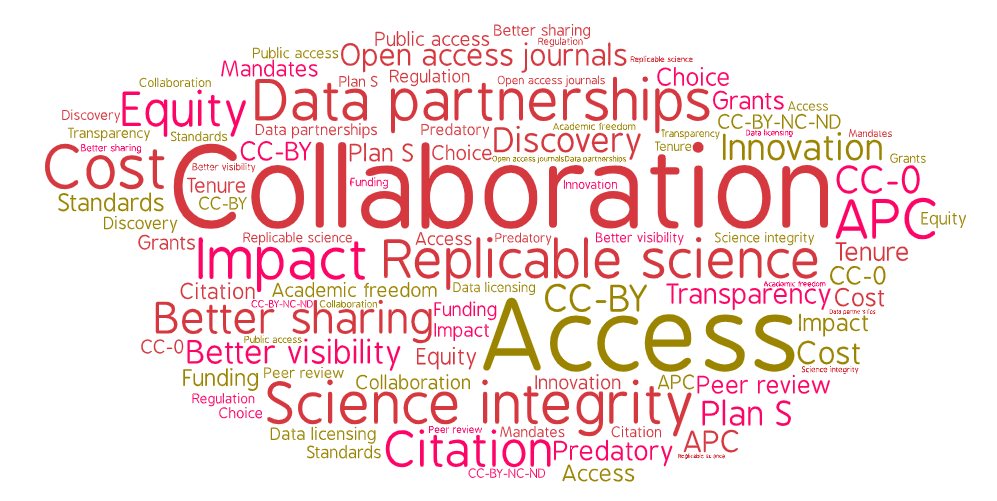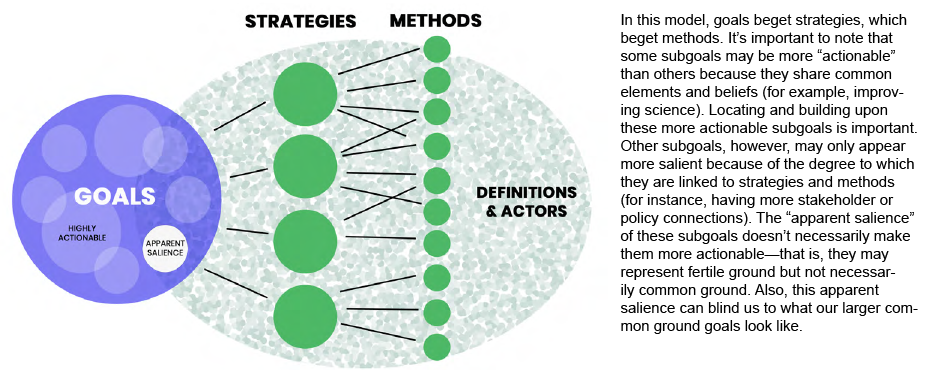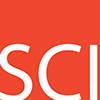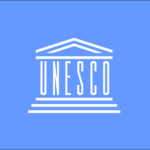Is it possible to create a unified approach to different open solutions like open access, open data, and open source? Why should we con-sider this, what benefits might this approach have, and what would the framework of this solution look like?
T
he need for effective knowledge sharing has never been clearer and more urgent than today. A vast global community has been responding to this need for many years—including researchers, government funders, policy agencies, private foundations, commercial publishers, universities, and libraries. Much progress has been made, both in research and in knowledge sharing, but a great deal of work remains.
Enter the open access, open data, open science, open source/code, open government, and open education movements. These movements have each made significant contributions to the evolution of our knowledge sharing practices. Each movement is entirely separate, however, with different outputs, goals, tools, measures, methods, actors and stakeholders. These movements also lack coordination on common goals, which has resulted today in a lack of leadership on broad and globally workable open solutions, a lack of support for open infrastructure and other open needs, and slow acceptance and adoption of open policies—even conflicting policies.
Would it help to unite these solutions under a single open solutions policy framework? Is this even possible? And if so, then what might such a framework look like?
OVERVIEW
Open philosophies have evolved for decades now—in some cases centuries—from many corners of many societies. Some of these philosophies were originally fueled by idealism, others by need or opportunity. There is no single starting point for any open philosophy or for open movements in general. Rather, this growth has been iterative and cumulative.
Along the way, these movements have followed different paths and have adopted different goals for and definitions for “open.” This has led to a variety of discrete open movements and philosophies, including but not limited to open access, open data, open source/code, open science, open government, and open educational resources. All of these movements are largely independent, with common looking elements at the margins, but are in fact led by different groups, serve different stakeholders, and have different guiding principles and points of emphasis.
As a result, there are now a wide array of groups designing and implementing a wide array of open policies with a variety of different “rules” about open, working for change within their circles of influence, and in some cases, beyond.
What if anything do all these different movements have in common?
- They are all “normal” and commonplace. Researchers today see open as one set of tools among many.
- They share many common tools, approaches, and best practices.
- They all share a common goal of making information of various kinds more open.
- They all realize that over time there are no one-size-fits-all definitions, methods or policies, even within individual open solutions communities of practice like open access or open data.
FIGURE 2: DIFFERENT POINTS OF EMPHASIS IN OPEN

WHY OPEN?
There are essentially five reasons why our quest for a more unified approach to open solutions is important:
- There is vast potential for open solutions of all kinds to improve research and the value of research to society.
- There are immediate and pressing research needs where open solutions can help, like vaccines and climate change.
- There is a certain inevitability to the open revolution. Open solutions are everywhere today.
- Again, there are no one-size-fits-all solutions. Working together is the only way to develop solutions that take into account a full range of perspectives, and
- Working together is the only way to avoid creating open policies that are little more than a cacophony of regulation and conflict, and that may even harm science.
Where are we at the moment? Over the past several decades, the openness of research information has grown steadily. Over 50% of all new journal articles today are published in open access format, and two-thirds of all funders encourage or require open access. Similarly, data availability is now required by most publishers, and data partnerships of all kinds (most not fitting our traditional definitions of open) are increasing. Open source is widespread and hugely successful; there is increasing pressure from funders and governments to use open lessons and tools to improve science; and open educational resources are expanding, building upon best practices from other open fields. Publishers, funders and tenure committees are all trying to figure out the right ways to encourage and embrace open in new generations of policies. In our enthusiasm, there is also a concerted push in some quarters to create global one-size-fits-all open policies that make open the standard way of doing business in research.
The question, then, isn’t whether open solutions will continue to emerge, grow and evolve, but whether these policies are working as well as they can, and if not, what a different open policy approach might look like? Open policies today are mostly similar in name only due to the many differences of each movement, as mentioned earlier (with regard to histories, motives, philosophies, structures, goals, stakeholders, rules, and policies). These policies are also handcuffed by a wide array of researcher concerns, regional inequities, other unintended consequences, and limited scalability.
So, while open movements are creating huge and diverse changes in the information landscape, and many of these changes are good, there are significant oversights and consequences. Critically, we also aren’t capitalizing on the full potential of open. Open advocates end up speaking past each other—our definitions and goals aren’t the same, our one-size-fits-all reform efforts don’t resonate or work with most of the world, and we don’t see our common ground needs and perspectives, just the details of our policies and ideologies.
Fortunately, we may be at a stage in the evolution of these solutions where we can begin to knit them together more effectively. What might this unified approach look like?
WORK THAT NEEDS TO BE DONE
Whether we’re working for unified open solutions or just a better approach to open policies, there are eight general rules that should apply to our efforts:
- Think first. Our approaches to some open solutions (open access in particular) have been powered by ideology. We have designed these solutions first, then tried selling them to researchers, downplaying unintended consequences, and ignoring the need for a more complete understanding of the open space. Reversing this process is important.
Ask the right questions. Instead of honing in on narrow policy questions like what kind of licensing is best, we need to step back and ask broader questions like what does good data look like? In what settings? Are we trying to make everything available to everyone, or some things available to some? Is our goal to help communities of practice succeed, make research more transparent, give patients better access to information, improve access to knowledge around the globe, or all of the above in all circumstances? Do we simplify and incentivize systems for sharing, or do we mandate sharing? What open outcomes are welcome and acceptable (and why)? - Be guided by facts and evidence. It’s critical to listen to and build on researcher needs, and also learn from what’s actually happening in the open space. Some of the most successful open models currently being used by researchers don’t fit our narrative of what open is “supposed” to look like. We can’t assume we know all there is to know about open, and then work backward, pounding square peg solutions into the round holes of researcher needs and concerns. Only facts and evidence will lead us to the solutions that will begin to unlock the real potential of open.
- Be wary of ideology. This is the flip side of the “value evidence” rule. Ideological pressure in the open access space is seeping into other open solutions spaces. This pressure is driven by a false depiction that there is only one “true” kind of open, rather than a spectrum of outcomes. This pressure risks creating suboptimal open solutions that researchers resist, or unintended consequences (like APC policies that have escalated publishing costs beyond the reach of most authors), instead of solutions that are robust, diverse, flexible, and sustainable.
- Work together. There are no “let’s let someone else decide” options. Open access, open science, open data, and other movements all have different perspectives and priorities. An open science led effort makes no sense for humanities researchers; an open access led effort makes no sense for open data. There are no one-size-fits-all answers, and the impacts of our policies will vary by field, region, type of open, and more.
- Set realistic expectations. We need to be wary of claims that open solutions are a panacea for all that ails research. They aren’t. There are many connected issues that need to be worked on in parallel, such as peer review, impact factors, embargoes, and the myriad issues connected to research reliability and replicability.
- Be realistic about public need. The idea that we can open all information for public use is an intriguing vision worth pursuing. But we need to be led by evidence, because the cost of developing these solutions is high and not always practical, and the evidence doesn’t support that public uptake is strong across all types of research information.
- Respect diversity. We can no sooner pick the “right” answers from the diversity of perspectives and outcomes in this space than pick the right colors from the rainbow. Each perspective and outcome is important, and each contributes to the greater whole. Trying to impose a rigid ideological order on this landscape will at best be ineffective, and at worst will fracture the global solution space instead of unite it. Instead, we need a common-sense, collaborative, evidence-driven open solutions approach that unites the disparate elements in this space—an approach that listens to all stakeholders, embraces diversity, and nurtures growth and innovation.
With regard to this last point, for example, supporting open science has nothing to do with picking definitions and establishing policy guidelines as some agencies are currently trying to do. Instead, we can help open science by developing a better understanding of researcher needs, a better understanding of global barriers to access, new journal-free ways to share and collaborate, better connections between research and the public, better global support for data-intensive research, improved data standards efforts, improved data warehousing resources, improved interdisciplinary integration, and improved efforts to bolster science integrity, reliability and replicability.
Guiding these eight specific rules for constructing better open solutions are three general philosophies that constitute our central, unifying approach to developing a unified open solutions policy framework:
Open is not a goal:
- Open is a means, not an end. It is a way to solve problems and improve benefits.
- Open is not an ideal. No open model is ever universally and completely open.
- Open has consequences. If we truly want open solutions to succeed, we cannot ignore the inequities or unintended consequences they can cause.
- Open evolves. It is not a static state that can be defined once and for all time. As open evolves, it creates other realities we need to face.
- Openness requires collaboration—we must work together to create real solutions. Then and only then can we unlock the vast potential of open to improve science and society.
Researchers are key:
- Researchers care about open insofar as it can help improve the quality, reach and impact of their work. Open solutions efforts need to keep this focus in mind—that open reforms need to benefit research.
- Researcher voices have been underrepresented in open efforts to date. Our open efforts to date have mostly involved requiring the research community to follow open rules they didn’t create. This dynamic needs to change.
- Researchers have a wide variety of motives for using open solutions. By portraying the open movement as one where everyone shares the same motives, we ignore those who are not so motivated, or who are more concerned about the real or potential negative consequences of current approaches to open.
A goals-based approach works best:
- A goals-based approach has the potential to unify all the disparate strategies and methods in the open solutions space by identifying the long-term changes our broad community desires for open, and then working backward, together, to map out the actions and policies we need to create this change.
- By focusing on our common goals, we can work together in a way that maximizes cooperation and minimizes conflict over the many differences in this space.
- We know the goals-based (Theory of Change) approach works. It is already widely used in business, governments, and the United Nations.
FIGURE 4: THE GOAL-BASED MODEL FOR OPEN SOLUTIONS

By focusing on our common goals instead of trying to reconcile our vastly diverse needs, ideologies, methods, and so forth, we can focus the power and potential of open on grand challenges like vaccines and climate change; we can prove the best paths to open through experience and iteration instead of theory; we can let each open solution continue to evolve and serve the needs of its community (because coders don’t care about OA publishing, for example); we can work together to improve research and the research communication landscape; we can find connection points between different solutions; we can identify and build infrastructure that can help all open; and we can build a global framework—buttressed by education, support, tools, incentives, and more—for making all information available and accessible to the extent possible.
Adopting a goal-centric approach does not mean creating one definition for open, or one set of open policies, or reaching global agreement on what we should do and how. Instead, it means embracing the diversity of the open space, working together more effectively on common goals, and letting the best ideas and solutions win on their merits.
It also means that instead of just collecting open artifacts like we now do, and remaining stuck in the mindset that open is something a single group owns and can define and legislate, a goal-centric approach means working together in common cause to solve real problems with all kinds of open, letting the free competition of ideas decide which approaches work best, and then helping the community of open users take ownership of these ideas and continuously improve research with open. Creating this framework is just the beginning of a generations-long process, not the finish line.
CONCLUSION
Our future has never been more dependent on research. The challenges of transforming research into the Open Age are significant, but so are the potential benefits. We can unify and empower the constellation of different open movements, and at the same time reap the full potential of open, by setting broad common goals, working together to meet researcher needs, and setting aside our ideological preconceptions about what “open” should look like. Working together, we can create a future for science and society that is beyond parallel—truly, an Open Renaissance that will usher in a new era of discovery for science, and benefit for all of society.
ORGANIZATIONS AND EFFORTS FOCUSING ON THIS ISSUE
UNESCO and OSI are the only organizations working on the policy aspects of this idea at the moment (the intellectual foundations of this idea have been explored by Davies, Smith and others; see the references section). OSI’s Open Solutions paper discusses this idea in more detail, and also includes a draft Open Solutions policy statement for UNESCO. Feedback is welcome.
REFERENCES & RESOURCES
This brief summarizes a 140 page extensively researched and referenced document written by OSI, which itself is the draws on years of extensive research. Rather than providing in-text citations after every sentence (which would be warranted in journal paper), readers are encouraged to review the source file (OSI 2021a) for references and additional detail and context.
OSI briefs
The following OSI brief provides additional information on this topic.
- Hampson, G. 2019 (2nd ed.). OSI Policy Perspective 1: Plan S & the quest for global open access. Open Scholarship Initiative. doi: 10.13021/osi2019.2450
- Hampson, G. 2020. OSI Policy Perspective 2: Common ground in the global quest for open research. Open Scholarship Initiative. doi: 10.13021/osi2020.2725
- Hampson, G. 2021b (Mar 24). Unleashing the Open Renaissance. Computers in Libraries Connect 2021 Conference.
- Hampson, G, M DeSart, L Kamerlin, R Johnson, H Hanahoe, A Nurnberger and C Graf. 2021a. OSI Policy Perspective 4: Open Solutions: Unifying the meaning of open and designing a new global open solutions policy framework. Open Scholarship Initiative. January 2021 edition. doi: 10.13021/osi2020.2930.
- Hampson, G, M DeSart, J Steinhauer, EA Gadd, LJ Hinchliffe, M Vandegrift, C Erdmann, and R Johnson. 2020 (June). OSI Policy Perspective 3: Open science roadmap recommendations to UNESCO. Open Scholarship Initiative. doi: 10.13021/osi2020.2735
- OSI. 2016. Report from the “What is Open?” Workgroup. Open Scholarship Initiative 2016 conference. doi: 10.13021/G8XK5R
- OSI. 2016. Report from the “What is Publishing?” Worgroup 2. Open Scholarship Initiative 2016 conference. doi: 10.13021/G8CS33
- OSI. 2017. OSI2017 Conference Report. http://osiglobal.org/wp-content/uploads/2017/11/OSI2017-summary-report-v2final.pdf
- OSI. 2017. Report from the Standards, Norms, and Best Practices Workgroup. Open Scholarship Initiative 2017 conference. doi: 10.13021/G8osi.1.2017.1932
- Plutchak, TS. 2018. OSI Issue Brief 1: What do we mean by open? Open Scholarship Initiative. doi: 10.13021/osi.v3i0.2367
Other key resources
- Archambault, E. 2018. Universalisation of OA scientific dissemination. https://www.slideshare.net/scielo/2-eric-archambault
- Björk, BC. 2018. Evolution of the scholarly mega-journal, 2006–2017. PeerJ 2018; 6: e4357. doi:10.7717/peerj.4357
- Bosch Stiftung. 2019. 14th Berlin Debate on Science and Science Policy Who Owns Science? Reshaping the Scientific Value Chain in the 21st Century. Conference report. https://www.bosch-stiftung.de/en/project/berlin-science-debate/berlin-debate-2019
- Davies, T, SB Walker, M Rubinstein, and F Perini (eds). 2019. The State of Open Data: Histories and Horizons. African Minds, IDRC. ISBN 9781928331957. Book pdf from https://www.idrc.ca/en/book/state-open-data-histories-and-horizons. HTML rendition at https://www.stateofopendata.od4d.net/
- European Union (EU). 2018. The Future of Scholarly Publishing and Scholarly Communication
- Fecher, B, and S Friesike. 2013. Open Science: One Term, Five Schools of Thought. SSRN. doi: 10.2139/ssrn.2272036
- Institute of Medicine (IOM). 2015. Sharing Clinical Trial Data: Maximizing Benefits, Minimizing Risk. Washington, DC: The National Academies Press. doi: 10.17226/18998.
- Johns, A. 1998. The Nature of the Book: Print and Knowledge in the Making. University of Chicago Press
- Kamerlin, L. 2019. Reaction of Researchers to Plan S: Too Far, Too Risky. https://sites.google.com/view/plansopenletter/open-letter
- Khodiary, V. 2020. What Role Can Publishers Play in the Open Data Ecosystem?. NIH Workshop on the Role of Generalist and Institutional Repositories to Enhance Data Discoverability and Reuse
- Knoth, P, and N Pontika. 2015. Open Science Taxonomy. Figshare. doi: 10.6084/m9.figshare.1508606.v3
- Laakso, M, L Matthias, and N Jahn. 2020. Open is not forever: a study of vanished open access journals. Pre-print. https://arxiv.org/ftp/arxiv/papers/2008/2008.11933.pdf
- Larivière, V, S Haustein, and P Mongeon. 2015. The Oligopoly of Academic Publishers in the Digital Era. PLoS ONE 10(6): e0127502. doi: 10.1371/journal.pone.0127502
- Lee, R. 2020 (Nov 12). Open Access: An Asian Perspective. Council of Science Editors (CSE) webinar, “Understanding Open Access, Plan S, and Other Global Initiatives in the Current Publishing Ecosystem: An Overview and International Perspective During a Pandemic”
- Molloy, J. 2011. The Open Knowledge Foundation: Open Data Means Better Science. PLoS Biol 9(12): e1001195. doi: 10.1371/journal.pbio.1001195
- Motter, K. 2020 (Nov 12). Untitled presentation. Council of Science Editors (CSE) webinar, “Understanding Open Access, Plan S, and Other Global Initiatives in the Current Publishing Ecosystem: An Overview and International Perspective During a Pandemic.”
- NAS. 2018. Open Science by Design. doi: 10.17226/25116
- National Academies of Sciences, Engineering, and Medicine (NASEM). 2020. Reflections on Sharing Clinical Trial Data: Challenges and a Way Forward. Workshop proceedings. Washington, DC: The National Academies Press
- NSF. 2020. The State of US Science & Engineering. National Science Foundation. https://ncses.nsf.gov/pubs/nsb20201/downloads
- OECD. 2015. OECD Science, Technology and Industry Scoreboard 2015: Innovation for growth and society, OECD Publishing, Paris. doi: 10.1787/sti_scoreboard-2015-en
- OECD. 2015. “Making Open Science a Reality”, OECD Science, Technology and Industry Policy Papers, No. 25, OECD Publishing, Paris. doi: 10.1787/5jrs2f963zs1-en
- Pinfield, S, S Wakeling, D Bawden, and L Robinson. 2020. Open Access in Theory and Practice: The Theory-Practice Relationship and Openness. Routledge.
- Piwowar, H, J Priem, V Larivière, JP Alperin, L Matthias, B Norlander, A Farley, J West, and S Haustein. 2018. The state of OA: a large-scale analysis of the prevalence and impact of Open Access articles. PeerJ 6:e4375. doi: 10.7717/peerj.4375
- Poynder, R. 2019. Open access: Could defeat be snatched from the jaws of victory? https://richardpoynder.co.uk/Jaws.pdf
- Poynder, R. 2020. Open access: “Information wants to be free”? https://poynder.blogspot.com/2020/12/open-access-information-wants-to-be-free.html
- RDA (Research Data Alliance). 2014. The Data Harvest: How sharing research data can yield knowledge, jobs and growth. https://bit.ly/33h0SYG
- Research England. 2018. Monitoring sector progress towards compliance with funder open access policies. UKRI (RE-P-2018-05). http://re.ukri.org/documents/2018/research-england-open-access-report-pdf/
- Scaria, AG, and R Shreyashi. 2018. Open Science India Report. OSF Preprints. doi: 10.31219/osf.io/aj9gw
- Schonfeld, R. 2020. Global Science and the China Split. Ithaka S+R blog post. doi: 10.18665/sr.314295
- Science-Metrix. 2017. Imagining a Gold Open Access Future: Attitudes, Behaviors, and Funding access availability of scientific publications. https://www.science-metrix.com/sites/default/files/science-metrix/publications/science-metrix_open_access_availability_scientific_publications_report.pdf
- Siler K, S Haustein, E Smith, V Larivière, and JP Alperin. 2018. Authorial and institutional stratification in open access publishing: the case of global health research. PeerJ 6:e4269. doi: 10.7717/peerj.4269
- Smith, M, and KMA Reilly (eds). 2013. Open development: Networked innovations in international development. IDRC (MIT Press). ISBN: 9780262525411
- Smith, M, and RK Seward (eds). 2020. Making open development inclusive: lessons from IDRC research. IDRC (MIT Press). ISBN 9780262539111
- Springer Nature. 2020. Open for all: Exploring the reach of open access content to non-academic audiences. White paper. doi: 10.5281/zenodo.4143313
- Staunton, C., S Slokenberga, and D Mascalzoni. 2019. The GDPR and the research exemption: considerations on the necessary safeguards for research biobanks. Eur J Hum Genet 27, 1159–1167. doi: 10.1038/s41431-019-0386-5
- STM. 2020. Introducing the STM2020 Research Data Year. https://www.stm-researchdata.org/
- Stuart, D, G Baynes, I Hrynaszkiewicz, K Allin, D Penny, M Lucraft, and M Astell. 2018. Practical challenges for researchers in data sharing. Springer Nature white paper. doi: 10.6084/m9.figshare.5975011
- Taylor & Francis. 2019. Taylor & Francis Researcher Survey. https://bit.ly/3koHgrX
- Tennant, J, A Ritwik, K Baždarić, D Brassard, T Crick, DJ Dunleavy, TR Evans, et al. 2020. “A Tale of Two ‘opens’: Intersections Between Free and Open Source Software and Open Scholarship.” SocArXiv. March 6. doi: 10.31235/osf.io/2kxq8
- Tennant, J, JE Beamer, J Bosman, B Brembs, NC Chung, G Clement, T Crick, et al. 2019 (January). Foundations for Open Scholarship Strategy Development. doi: 10.31222/osf.io/b4v8p
- UNESCO. 2018. World Trends in Freedom of Expression and Media Development. ISBN 978-92-3-100242-7
- VI BRISPE (6th Brazilian Meeting on Research Integrity, Science and Publication Ethics). 2020 (Aug). Research Integrity, Open Science and Authorship: Challenges and Opportunities for the Research Systems. Proceedings (unpublished as of December 2020)
- Wiley. 2018b. Interview of Fiona Murphy. https://www.wiley.com/network/archive/open-research-and-data-sharing-are-we-hearing-what-researchers-are-telling-us
- Wootton, D. 2015. The Invention of Science: A New History of the Scientific Revolution. HarperCollins
- Worlock, D. 2020 (Dec 7). Scholarly Communication Re-Invented. Keynote presentation to the 2020 Frankfurt Academic Conference, “A New Era for Academic Publishing in Europe and the US.” https://bit.ly/39RWYcI










